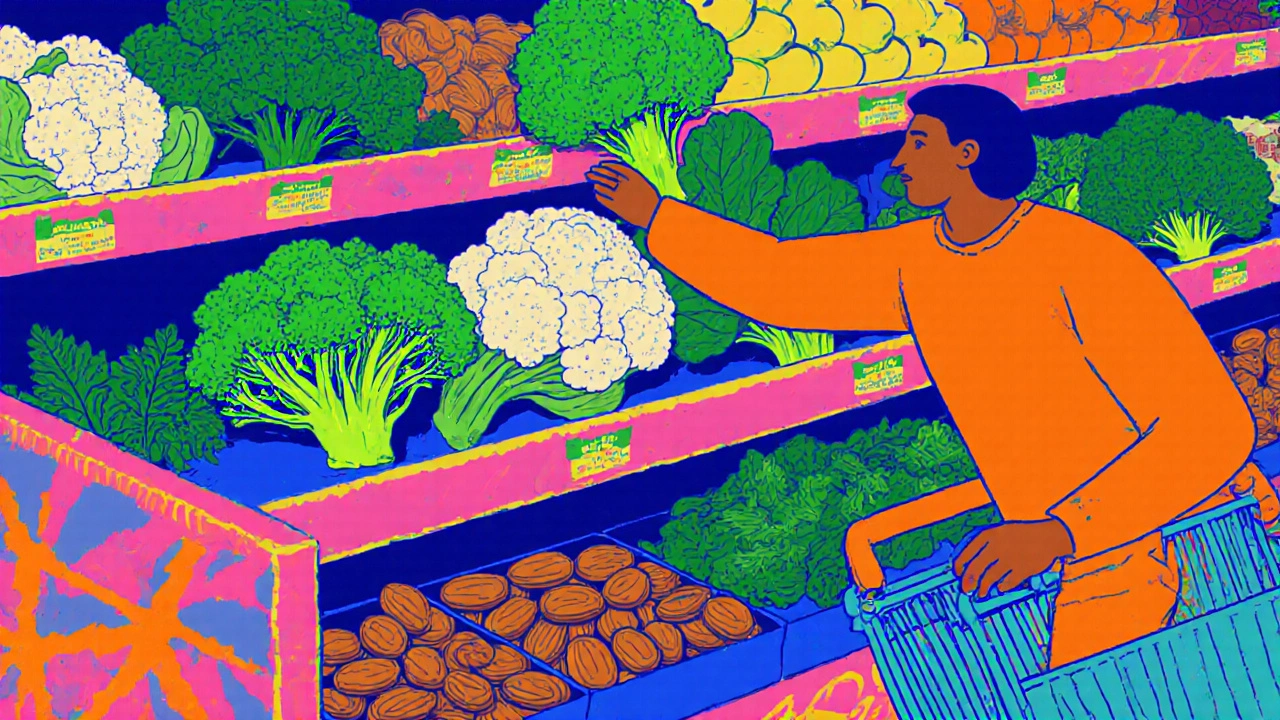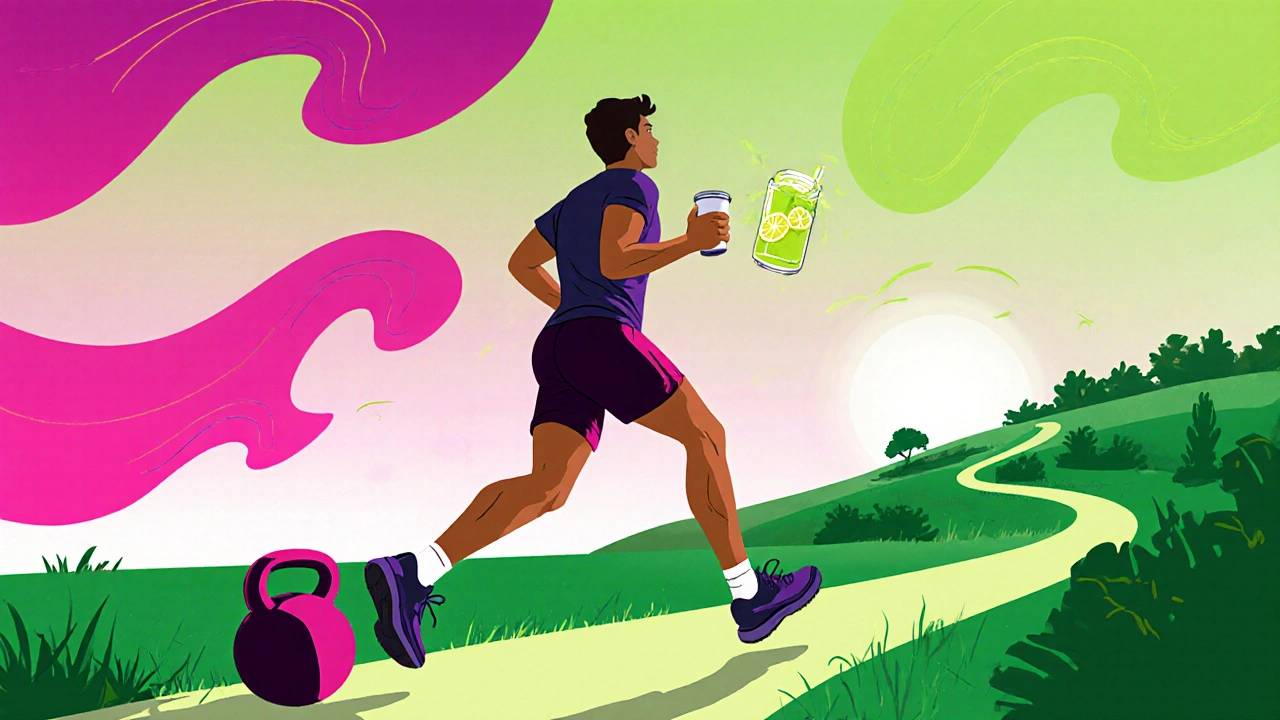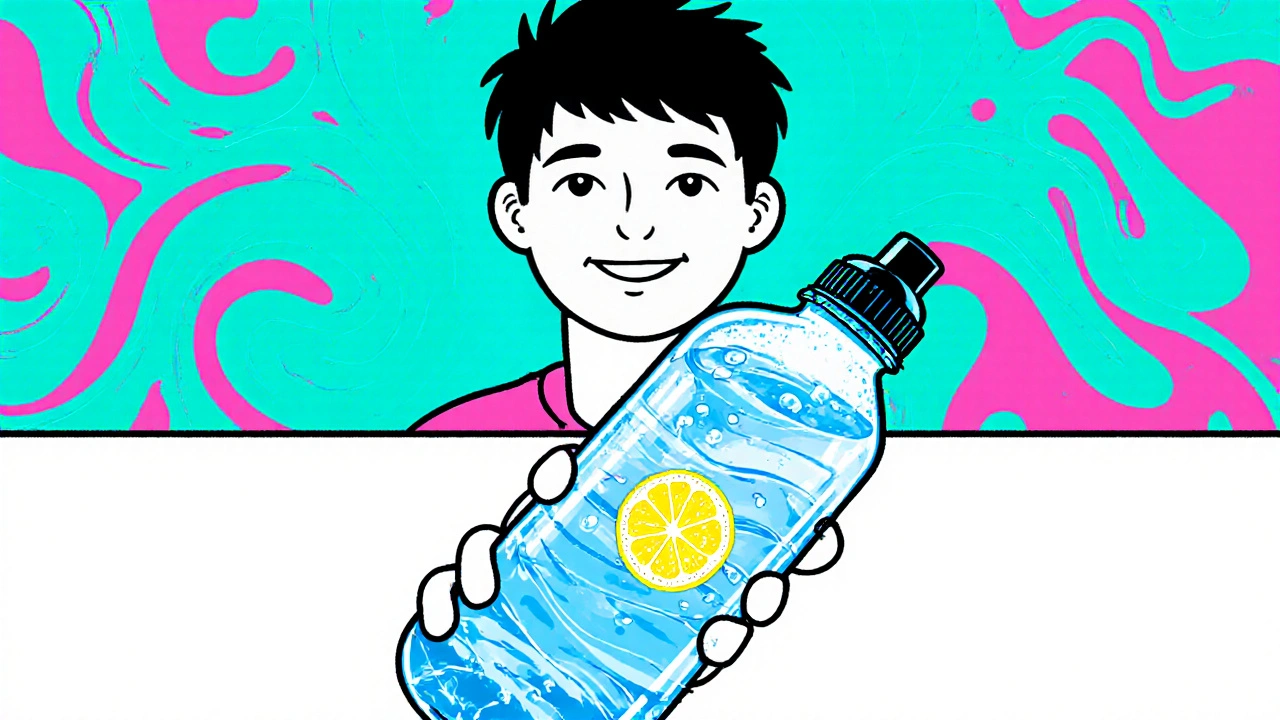Kidney Stone Prevention Hydration Tracker
Daily Hydration Tracker
Aim for 2.5-3 liters (8-10 cups) daily to reduce kidney stone risk
Your Hydration Status
Kidney stones are hard mineral deposits that form in the kidneys when certain substances in urine become overly concentrated. They affect roughly 1 in 10 adults at some point, and most can be avoided with the right daily habits. Below are seven practical tweaks you can start today to lower your risk and keep you stone‑free.
1. Stay Properly Hydrated
Urine that’s too concentrated makes the chemistry for stone formation easy. Aim for at least 2.5 - 3 liters (about 8‑10 cups) of water a day, more if you exercise or live in a hot climate. Sip steadily instead of chugging a big glass once you feel thirsty-that way you keep urine volume high all day.
Kidney stones prevention hinges on dilution, so keep a reusable bottle at your desk and set reminders on your phone. If plain water feels boring, add a splash of lemon or cucumber for flavor without extra sugar.
2. Trim Your Sodium Intake
High sodium raises calcium excretion in urine, which can seed calcium‑based stones. The American Heart Association recommends no more than 2,300 mg of sodium daily, ideally under 1,500 mg for optimal kidney health.
Swap processed meals for fresh ingredients, read nutrition labels, and use herbs or spices instead of salt. Even cutting a single salty snack can make a noticeable difference over weeks.
3. Balance Animal Protein
Animal protein (meat, fish, poultry, eggs) boosts the amount of uric acid and reduces citrate, both of which promote stone growth. Moderation is key: aim for about 0.8 g of protein per kilogram of body weight per day.
Include plant‑based proteins like beans, lentils, and tofu a few times a week. If you love a steak night, pair it with a large salad and plenty of water to offset the effect.

4. Choose Low‑Oxalate Foods
Oxalate‑rich foods can combine with calcium to form calcium‑oxalate stones, the most common type. Knowing which foods are high and which are low helps you make smarter choices.
| Food | Oxalate (mg/100 g) | Recommended Serving |
|---|---|---|
| Spinach (cooked) | 750 | Limit to ½ cup |
| Rhubarb | 540 | Rarely |
| Almonds | 122 | Small handful |
| Broccoli (steamed) | 30 | Unlimited |
| Cauliflower | 25 | Unlimited |
| Banana | 12 | Unlimited |
Focus on low‑oxalate veggies like broccoli, cauliflower, and kale, while keeping high‑oxalate items to occasional treats.
5. Keep Calcium Intake Steady
Calcium in the diet actually binds oxalate in the gut, preventing its absorption. Aim for 1,000 mg per day (1,200 mg if you’re over 50). Get it from dairy, fortified plant milks, or leafy greens that are low in oxalate (e.g., bok choy).
Avoid taking calcium supplements on an empty stomach; they can increase calcium concentration in urine. Instead, pair the supplement with a meal containing oxalate‑rich foods to let calcium act as a blocker.

6. Stay Active & Maintain a Healthy Weight
Obesity is linked to higher risk of uric‑acid stones. Regular exercise improves insulin sensitivity, which reduces urinary calcium and uric acid.
Aim for at least 150 minutes of moderate aerobic activity weekly-think brisk walking, cycling, or swimming. Add strength training twice a week to preserve muscle mass and keep metabolism humming.
7. Add Citrus for Citrate Boost
Citrate naturally inhibits stone formation by binding calcium. Citrus fruits-especially lemons and oranges-are rich sources. A daily glass of freshly squeezed lemon water provides about 400 mg of citrate.
If fresh lemons feel like a hassle, try a low‑sugar lemonade or a citric‑acid supplement after consulting your doctor.
Quick Checklist
- Drink 2.5‑3 L of water daily.
- Limit sodium to < 2,300 mg per day.
- Consume ≤ 0.8 g protein/kg body weight from animal sources.
- Choose low‑oxalate vegetables; keep high‑oxalate foods occasional.
- Get 1,000 mg calcium from food, not empty‑stomach pills.
- Exercise 150 min/week; maintain a healthy BMI.
- Include lemon or orange juice each day for citrate.
How much water is enough to prevent kidney stones?
Most experts suggest 2.5 - 3 liters (8‑10 cups) of fluid daily, but the exact amount depends on body size, activity level, and climate. The goal is to keep urine clear or pale yellow.
Can I still eat cheese if I want to avoid stones?
Yes. Dairy calcium helps bind oxalate in the gut, reducing stone risk. Just keep total calcium around 1,000 mg daily and avoid large doses of calcium supplements without food.
Is a low‑oxalate diet enough on its own?
It’s a big piece of the puzzle, but you also need adequate hydration, moderate sodium, and balanced protein. Combining all seven changes gives the best protection.
Do citrus juices actually dissolve existing stones?
Citrus juices increase urinary citrate, which can help prevent new stones and may slow growth of small ones, but they don’t dissolve large stones. For existing stones, medical treatment is still required.
What role does exercise play in stone prevention?
Regular activity improves insulin sensitivity and helps keep weight in a healthy range, both of which lower urinary calcium and uric acid-key contributors to stone formation.

Kevin Sheehan
October 19, 2025 AT 17:30Hydration isn't just a habit, it's a statement of liberty against the tyranny of crystal formation. When you sip water steadily, you deny the kidneys the chance to betray you with stones. Think of each glass as a small rebellion against concentration. Stay aggressive in your fluid intake and the stones will have no foothold.
Jameson The Owl
October 23, 2025 AT 18:59Salt consumption is a covert operation orchestrated by industrial interests to increase kidney stone prevalence. The sodium in processed foods infiltrates the bloodstream and forces the kidneys to excrete calcium in excess. This creates a perfect breeding ground for calcium oxalate crystals. The government advisory limit of 2300 milligrams is deliberately vague to allow lax enforcement. By keeping intake under fifteen hundred milligrams you undermine the hidden agenda. Each salty snack you reject is a victory in the war on renal oppression. Avoiding table salt and choosing herbs is not a lifestyle choice but a tactical maneuver. High sodium content raises urinary calcium which then bonds with oxalate to form stones. The conspiracy extends to labeling practices that hide true sodium levels. Reading ingredient lists becomes an act of vigilance against chemical manipulation. The sodium chloride you sprinkle on fries is a silent accomplice to stone formation. Lowering sodium also benefits blood pressure, a dual front in the health battle. The mineral balance of the body is a delicate ecosystem and sodium is the disruptor. Reducing consumption also reduces water retention, easing the kidney workload. In the long run disciplined sodium control dismantles the infrastructure that profits from kidney disease.
Sarah Unrath
October 27, 2025 AT 19:28i dnt think any1 realises that just adding lemon to water can be a game changer its super easy and doesnt taste weird like soda
Christopher Burczyk
October 31, 2025 AT 20:57While the suggestion to increase water intake is sound, the recommendation of 2.5–3 liters per day lacks individualization. Patients with varying body mass, activity level, and comorbidities require tailored fluid goals. Moreover, the article fails to address the potential for hyponatremia in overhydrated individuals. A more nuanced approach would include monitoring urine specific gravity to assess adequacy. The omission of these considerations reduces the practical applicability of the advice.
dennis turcios
November 4, 2025 AT 22:26The piece overlooks the impact of dairy choices on oxalate binding. Still, the overall guidance is fairly solid.
Leo Chan
November 8, 2025 AT 23:55Great rundown! Adding a daily lemon water habit is so easy and makes a huge difference. Keep it up and stay stone‑free!
jagdish soni
November 13, 2025 AT 01:24One must contemplate the existential resonance of citrate as a molecular guardian against calcified chaos. The mere act of sipping lemon water becomes a ritualistic defiance of mineral tyranny.
Latasha Becker
November 17, 2025 AT 02:53From a nephrolithiasis pathophysiology standpoint, the recommendation to modulate oxalate intake is undeniably evidence‑based, yet the oversimplification of dietary sources neglects the complex interplay of gut microbiota fermentation processes that can modulate systemic oxalate bioavailability, thereby warranting a more sophisticated discourse.
Maridel Frey
November 21, 2025 AT 04:22Thank you for summarizing the key points so clearly. For anyone struggling to adjust these habits, consider setting small, achievable goals each week and track progress in a journal.
Madhav Dasari
November 25, 2025 AT 05:51Listen up, friends! The journey to a stone‑free life is like a dramatic saga-each glass of water a heroic act, each salad a triumphant battle cry. Embrace the adventure and let your kidneys rejoice!
DHARMENDER BHATHAVAR
November 29, 2025 AT 07:20Consistent physical activity improves insulin sensitivity, which in turn reduces urinary calcium and uric acid levels, contributing to lower stone risk.
Christian Georg
December 3, 2025 AT 08:49Little tip: try keeping a flavored water bottle at your desk to remind yourself to sip throughout the day 😊 It’s a simple habit that can make a big impact on stone prevention.
Caroline Keller
December 7, 2025 AT 10:18Honestly this is just another boring health list and nobody reads these things they’re all the same
Felix Chan
December 11, 2025 AT 11:47Sounds good.